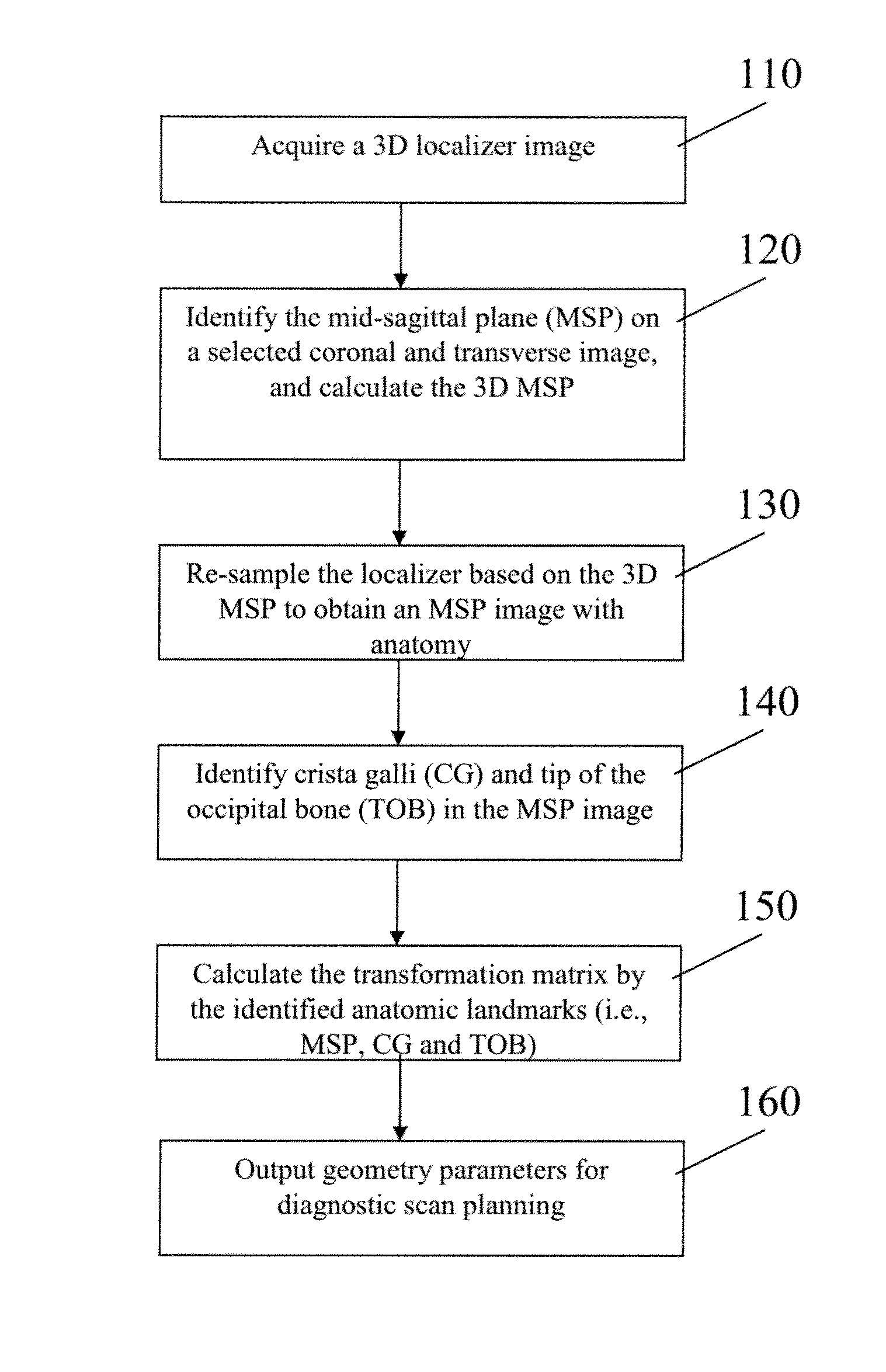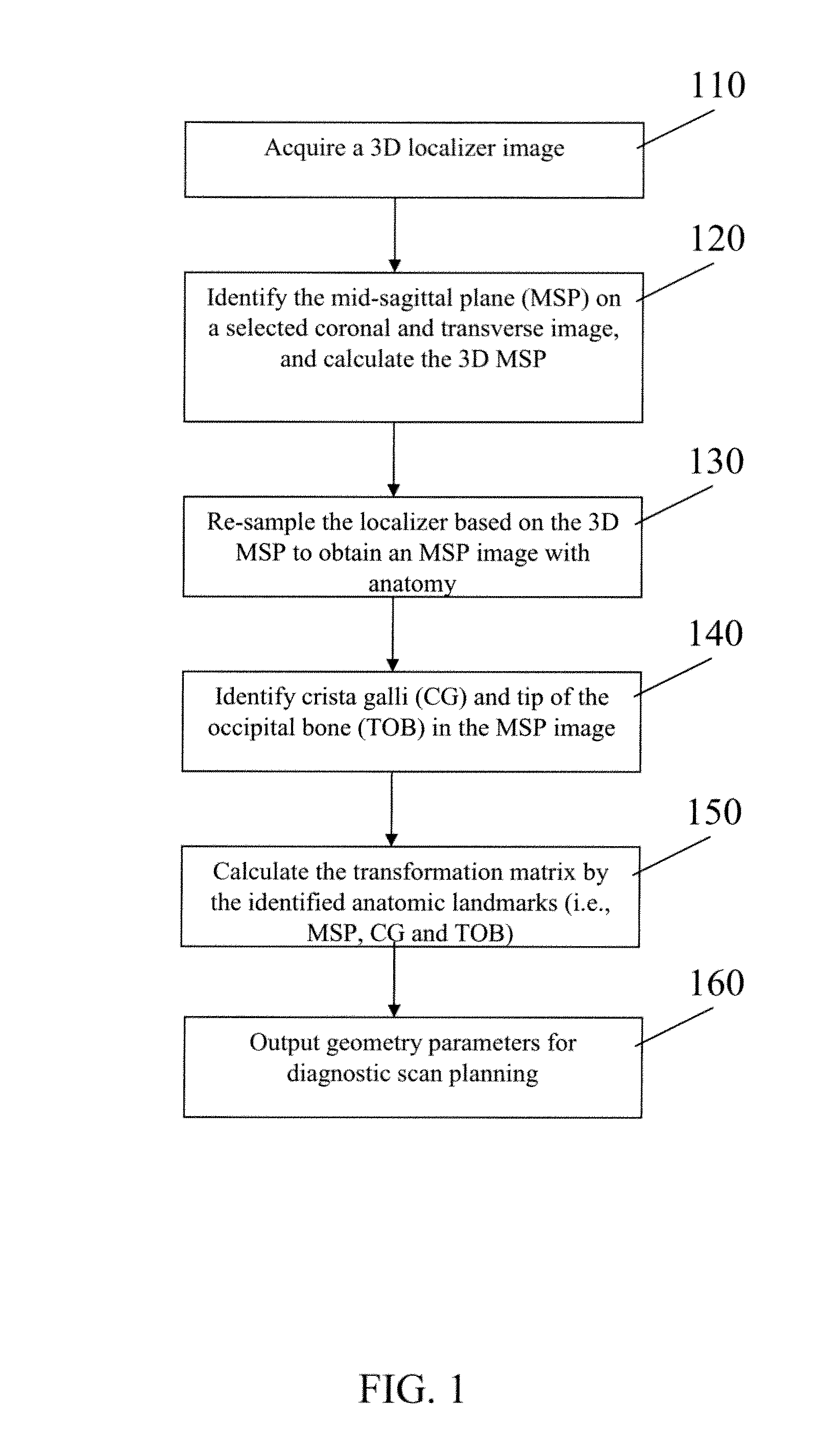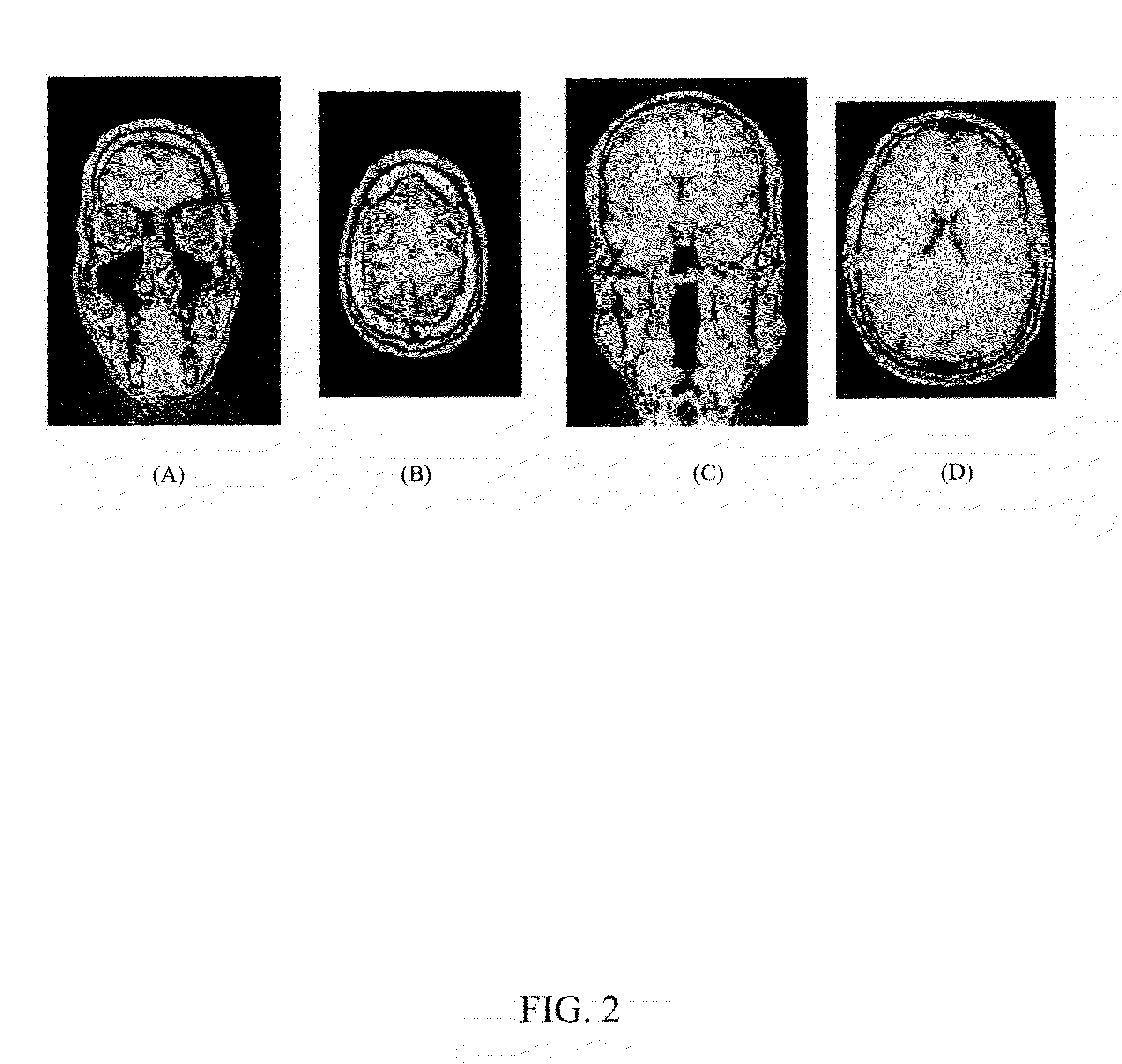Automatic alignment of magnetic resonance imaging (MRI) brain scan by anatomic landmarks
a magnetic resonance imaging and brain scan technology, applied in the field of automatic brain scanning, can solve the problems of incongruous anatomy on diagnostic images, patient must remain absolutely, manual process may take several seconds, etc., and achieve the effect of minimizing differences and maximizing image gradient magnitud
- Summary
- Abstract
- Description
- Claims
- Application Information
AI Technical Summary
Benefits of technology
Problems solved by technology
Method used
Image
Examples
Embodiment Construction
[0034]A method to automatically align brain scans for diagnostic scan planning, in accordance with an exemplary embodiment of the present invention, will now be described with reference to the accompanying drawings.
[0035]The method requires a three-dimensional (3D) localizer to start the scan planning. The fully automated process provides standardized and reproducible brain scanning for different hospitals, departments and operators, in order to perform disease diagnosis, treatment evaluation and therapy control.
[0036]The automatic brain alignment algorithm starts with a dedicated three-dimensional (3D) localizer (110). From the 3D localizer, a coronal and a transverse image are selected to identify the mid-sagittal plane (MSP) and the 3D MSP is calculated from the MSP detection results on the selected coronal and transverse images (120). Then the original 3D localizer volume is re-sampled based on the orientation of the MSP to obtain an image with MSP anatomy (130). On the MSP imag...
PUM
 Login to View More
Login to View More Abstract
Description
Claims
Application Information
 Login to View More
Login to View More - R&D
- Intellectual Property
- Life Sciences
- Materials
- Tech Scout
- Unparalleled Data Quality
- Higher Quality Content
- 60% Fewer Hallucinations
Browse by: Latest US Patents, China's latest patents, Technical Efficacy Thesaurus, Application Domain, Technology Topic, Popular Technical Reports.
© 2025 PatSnap. All rights reserved.Legal|Privacy policy|Modern Slavery Act Transparency Statement|Sitemap|About US| Contact US: help@patsnap.com



